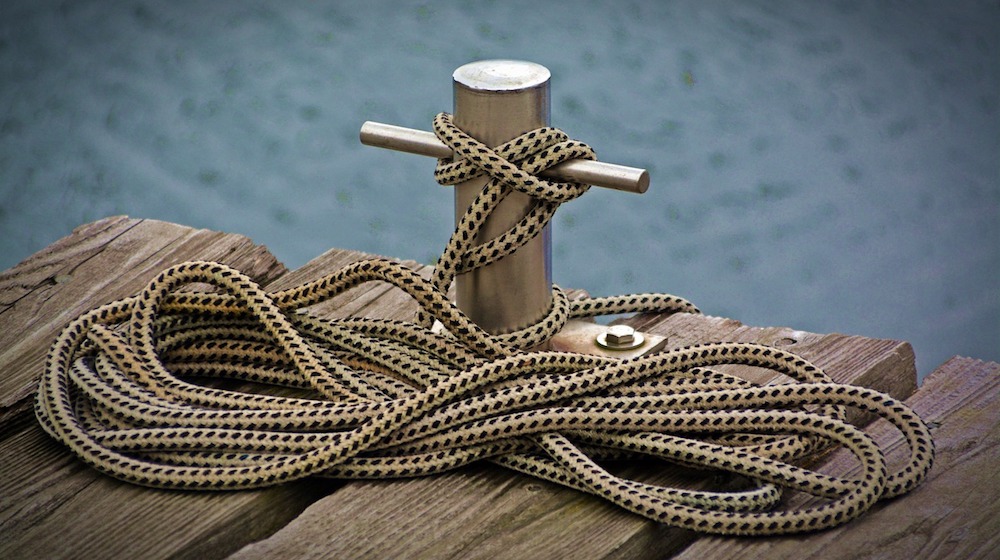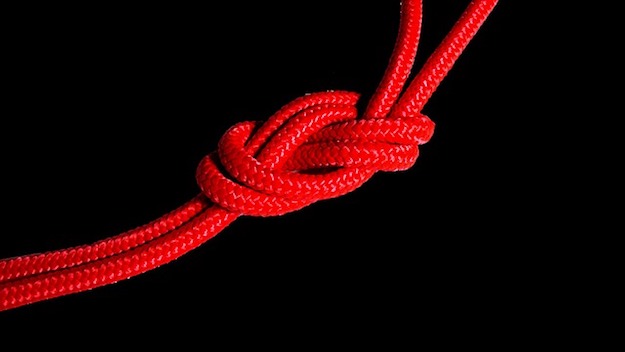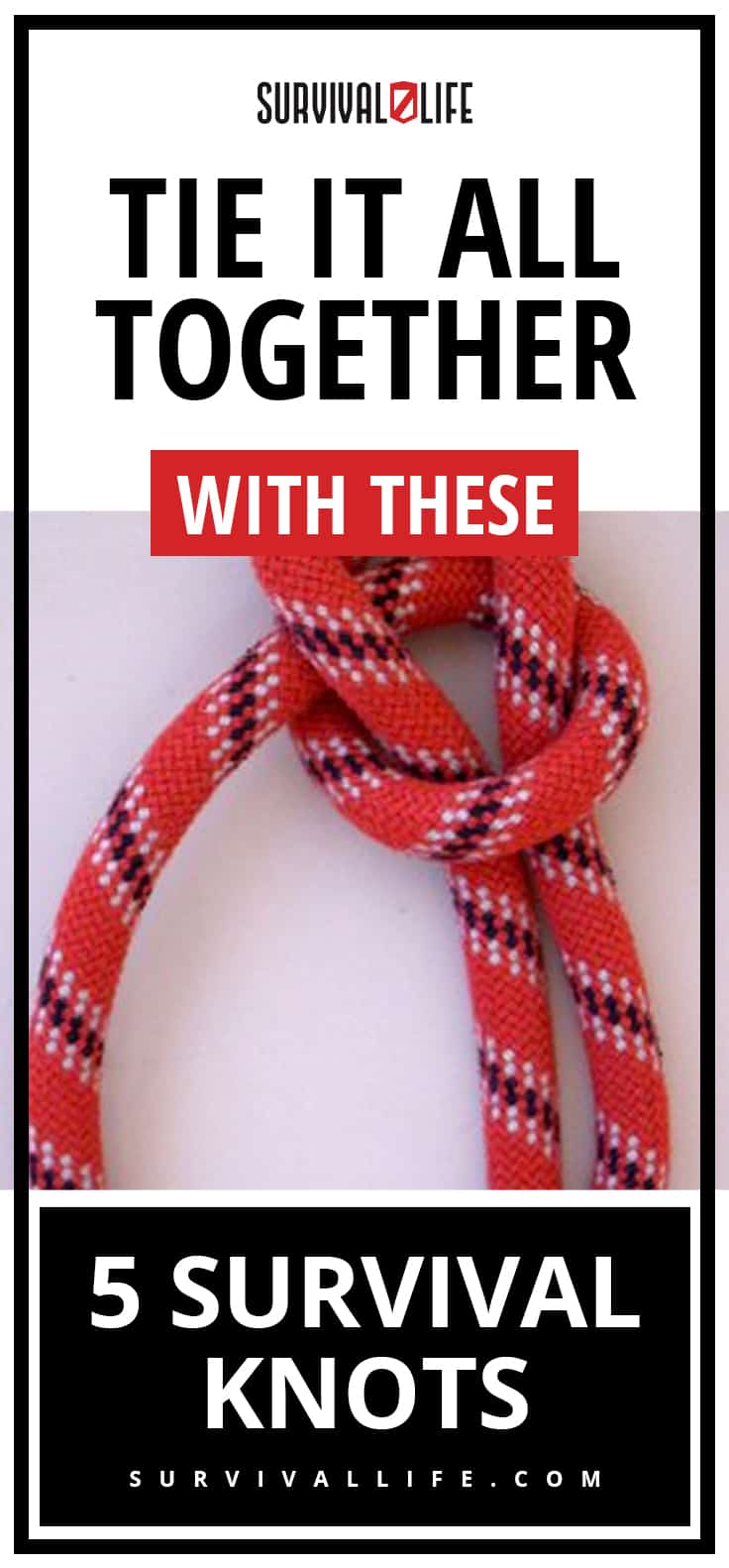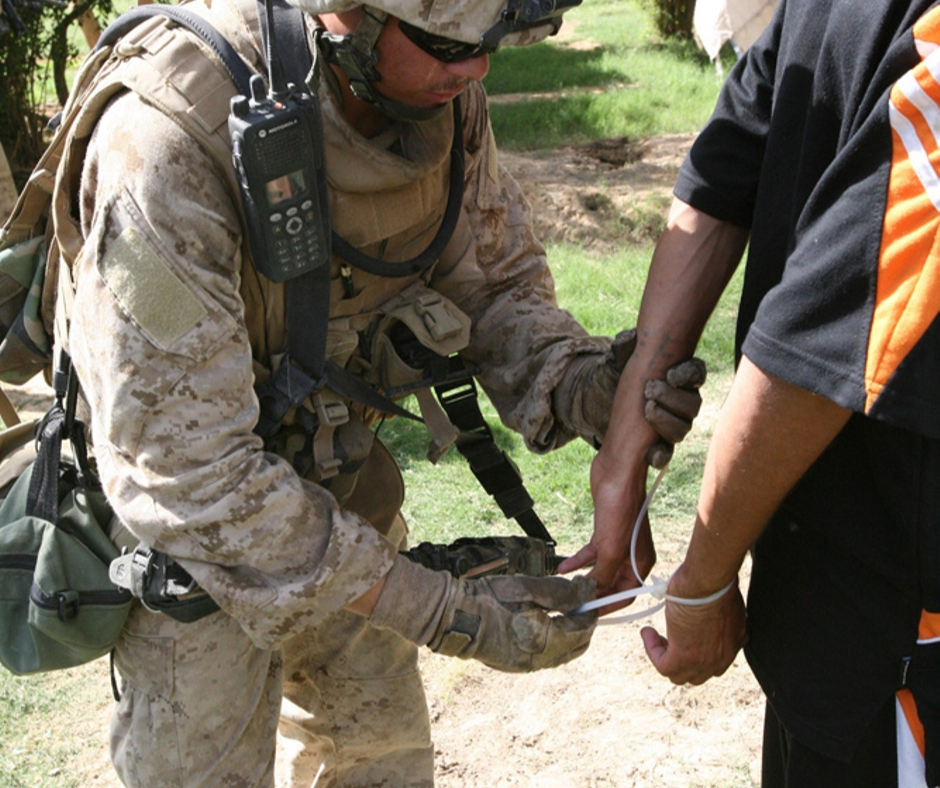Do It Yourself
Tie it All Together with These 9 Survival Knots

There are literally hundreds of survival knots you can learn, and they are all useful. But, throughout my research, I noticed that there are nine knots that are used the most. I think every survivalist should learn these popular knots.
9 Survival Knots Everyone Should Know
1. The Reef Knot (also known as a Square or Hercules knot)
I grew up sailing and one off the first knots my dad drummed into me was the reef knot! I thought it would be fun …https://t.co/6hsSj2UE43 pic.twitter.com/HGIz4lZOcA
— Em (@oh_gosh) September 28, 2017
The reef knot is an ancient and simple binding knot used to secure a rope or line around an object. This easy survival knot is formed by tying a left-handed overhand knot and then a right-handed overhand knot, or vice versa.
2. The Figure 8 Knot
The figure-eight knot is a type of stopper knot. It is very important in both sailing and rock climbing as a method of stopping ropes from running out of retaining devices. In other words, this is a knot that can save your life… but only if you know how to tie it!
3. The Bowline Knot

The bowline knot is a simple knot used to form a fixed loop at the end of a rope. It has the virtue of being both easy to tie and untie; most notably, it is easy to untie after being subjected to a load.
4. The Weaver’s Knot (also known as Becket Bend, Weaver’s Knot, and Weaver’s Hitch)
The sheet bend knot is a bend, which is a knot that joins two ropes together. Doubled, it is effective in binding lines of different diameter or rigidity securely together, although it has a tendency to work loose when not under load.
5. The Clove Hitch Knot (Also Known as the Double Hitch)
The clove hitch knot, along with the bowline and the sheet bend, is often considered one of the most important knots and is commonly referred to as a double hitch. A clove hitch is two successive half-hitches around an object. It is most effectively used as a crossing knot. It can be used as a binding knot, but is not particularly secure in that role.
6. The Taut Line Hitch
One of the most versatile survival knots ever, the taut line hitch is one of the toughest and sturdiest knots you can learn. It takes the place of a slide to either apply tension or loosen a loop in any line. As long as there is tension to it, this knot will hold.
To make this secure knot, wrap a loop around a tree or a tent stake. Using the free end of the rope, wrap it around the stake twice. After that, wrap the free end over the whole thing – one time towards you, and then cinch the wraps tight. Pull the standing line and you have a sturdy taut line hitch knot.
7. The Water Knot
If you have nothing but belts with you to make a survival knot, it’s great to know the water knot. This easy survival knot will work best with flat lines, such as belts.
Make a loose, overhand knot at the end of one of the straps. Pass the other strap in the opposite direction, making sure to mirror the same route the first knot took. Then, take two ends of the straps and pull them tight to secure.
8. The Rolling Hitch
Rolling Hitch, attach to a small rope or spar, direction of pull is parallel to the spar (will lock as you pull) Day 19 #Scout series #knots #VSCO https://t.co/RgogiGDWYd pic.twitter.com/lYCa0z0ll1
— Jessel Sookha (@jsookha) December 27, 2017
If you need to connect two lines together, the rolling hitch can add a leg to any existing line. It’s the basic principle behind the taut line hitch, with the only caveat being that it is only used to add a leg to a line. This was used in history to hook dogs along a sled.
Wrap the free end of one of your ropes around the main rope. This creates a half hitch knot. Then, repeat the process to make another half hitch survival knot. Wrap the entire knot to make another half hitch on the other side of where you started the knot from.
9. The Timber Hitch
#235: The timber hitch becomes a killeg hitch when an additionnal half hitch is used.
ABOK 271. pic.twitter.com/PSLICU5d0M— YearOfKnots (@YearOfKnots) August 23, 2018
This is one of the survival knots you should learn. As a survivalist, you will find yourself having to haul supplies here and there. The timber hitch sounds exactly like what it is: a knot for hauling timber. This is great for hauling firewood across lon distances.
Tie the free end of the rope around the log. Then, wrap the free end around the standing end of the rope. Then wrap that free end around itself four times. Tighten the hitch with one big pull so it wraps tightly around the log.
Here is a great video to help you learn how to tie your first survival knots:
To learn more about other knots, check out this article: 40 Essential Knots Every Survivalist Needs to Know. Also, check out my favorite and reliable paracord rope, the Spidercord. Get over 100ft of 660lb tested paracord; perfect for any survivalist. Buy it here.
What are your favorite survival knots? Let us know in the comments section.
Up Next: How To Tie A Fishing Knot
Get the amazing MicroFish Survival Kit is ultra light and made with paracord. Grab yours for just a penny.

Check out the Survival Life Store for EDC tools to self-defense weapons. Check it out here.
-

 Do It Yourself7 months ago
Do It Yourself7 months agoParacord Projects | 36 Cool Paracord Ideas For Your Paracord Survival Projects
-

 Do It Yourself9 months ago
Do It Yourself9 months agoHow To Make Paracord Survival Bracelets | DIY Survival Prepping
-

 Do It Yourself9 months ago
Do It Yourself9 months ago21 Home Remedies For Toothache Pain Relief
-

 Do It Yourself10 months ago
Do It Yourself10 months agoSurvival DIY: How To Melt Aluminum Cans For Casting
-

 Exports8 months ago
Exports8 months agoAre Switchblades Legal? Knife Laws By State









Pingback: How to Tie a Fishing Knot - 7 You Should Learn from Survival Life
Bruce Morelan
August 8, 2018 at 8:46 AM
A Truckers hitch should be in this list.
Pingback: How to Tie A Square Knot | Survival Life
Mark G.
January 28, 2019 at 1:21 AM
It’s a cool site but covered with ads. I am trying to read the info in between rows of wedding bands that I happened to google a couple of days early. Very distracting.
Pingback: Essential Knots Every Survivalist Needs To Know | Survival Life
gmg1usn
August 28, 2019 at 11:55 AM
I learned all of these…some of them under different names than here, both from my scout masters in Boy Scouts in the late ’50s and early ’60s, and in the Navy in the mid ’60s.
All properly tied knots are some variation of the basic square,or reef knot.
I always had trouble with the, “bowline on a bite”, the bie is the middle of the line or the standing part.
I use these knots frequently to tie up a multitude of things, especially large items that I carry in the bed of my pickup.